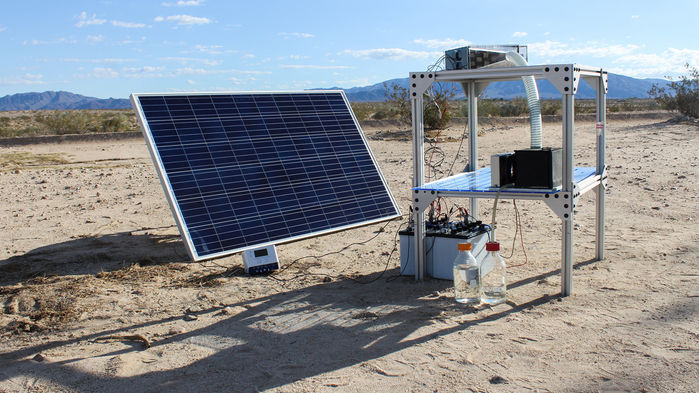SAN DIEGO, CALIFORNIA—When Omar Yaghi was growing up in Jordan, outside of Amman, his neighborhood received water for only about 5 hours once every 2 weeks. If Yaghi wasn’t up at dawn to turn on the spigots to store water, his family, their cow, and their garden had to go without. At a meeting last week here, in an-other area thirsting for freshwater, Yaghi, a chemist at the University of California, Berkeley, reported that he and his colleagues have created a solar-powered device that could provide water for millions in water-stressed regions. At its heart is a porous crystalline material, known as a metal-organic framework (MOF), that acts like a sponge: It sucks water vapor out of air, even in the desert, and then releases it as liquid water.
“This is fantastic work that addresses a real problem,” says Jorge Andrés Rodríguez Navarro, a MOF chemist at the University of Granada in Spain. It’s also just one example of how MOFs may finally be entering their prime. Yaghi and his colleagues synthesized the first MOF in 1995, and chemists have created tens of thousands of the structures since. Each is made up of metal atoms that act like hubs in a Tinkertoy set, connected into a porous network by organic linkers designed to hold fast to the hubs and create openings to house molecular guests. By mixing and matching the metals and linkers, researchers found they could tailor the pores to capture gas molecules, such as water vapor and carbon dioxide (CO2). “We can play games with modifying these and know exactly where every atom is,” says Amanda Morris, a MOF researcher at Virginia Polytechnic Institute and State University in Blacksburg. But because many of the early MOFs were expensive to make and degraded quickly, they did not live up to initial excitement

